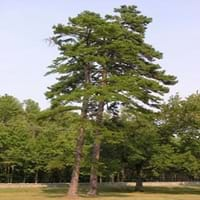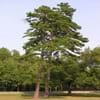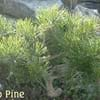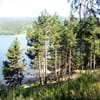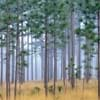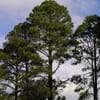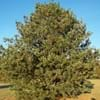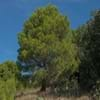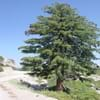What is
Life Span
Perennial
Perennial
Type
Needled or Scaled Evergreen
Tree
Origin
Mid-Atlantic United States, Southeastern United States, South-Central United States, Texas
Australia
Types
Not Available
Not Available
Habitat
Woodland Garden Canopy
Scrubs, tussock grasslands, Upland savannas
USDA Hardiness Zone
6-9
10-11
AHS Heat Zone
9-6
12-10
Sunset Zone
Not Available
8, 9, 12, 13, 14, 15, 16, 17, 18, 19, 20, 21, 22, 23, 24
Habit
Oval or Rounded
Upright/Erect
Information
Plant Size
Minimum Height
1,830.00 cm
22
550.00 cm
99+
Minimum Width
300.00 cm
99+
370.00 cm
99+
Plant Color
Flower Color
Not Available
Lemon yellow
Flower Color Modifier
Bicolor
Bicolor
Fruit Color
Brown, Sandy Brown
Gray Green
Leaf Color in Spring
Green, Dark Green
Blue Green
Leaf Color in Summer
Green, Dark Green
Blue Green
Leaf Color in Fall
Green, Dark Green
Blue Green
Leaf Color in Winter
Green, Dark Green
Blue Green
Shape
Leaf Shape
Needle like
Long Narrow
Thorns
No
No
Season
Plant Season
Spring, Summer, Fall, Winter
Spring
Growing Conditions
Sunlight
Full Sun
Full Sun
Growth Rate
Medium
Slow
Type of Soil
Loam, Sand
Loam, Sand
The pH of Soil
Acidic, Neutral
Acidic, Neutral, Alkaline
Soil Drainage
Well drained
Well drained
Bloom Time
Early Spring, Late Spring, Mid Spring
Spring, Late Winter
Repeat Bloomer
No
No
Tolerances
Drought
Drought
Care
Where to Plant?
Ground
Ground
How to Plant?
Cuttings, Seedlings
Seedlings
Plant Maintenance
Medium
Medium
Watering Plants
Watering Requirements
Average Water Needs
Do not water excessively
In Summer
Lots of watering
Lots of watering
In Spring
Moderate
Moderate
In Winter
Average Water
Average Water
Soil
Soil pH
Acidic, Neutral
Acidic, Neutral, Alkaline
Soil Type
Loam, Sand
Loam, Sand
Soil Drainage Capacity
Well drained
Well drained
Sun Exposure
Full Sun
Full Sun
Pruning
Remove damaged leaves, Remove dead branches, Remove dead leaves
Remove dead or diseased plant parts, Requires little pruning
Fertilizers
organic fertlizers
All-Purpose Liquid Fertilizer, No fertilizers needed
Pests and Diseases
Littleleaf disease
Insects, Root rot
Plant Tolerance
Drought
Drought
Facts
Flowers
Not Available
Showy
Flower Petal Number
Single
Single
Fruits
Showy Fruit
No
No
Edible Fruit
No
No
Fragrance
Fragrant Flower
No
Yes
Fragrant Fruit
No
No
Fragrant Leaf
No
No
Fragrant Bark/Stem
No
No
Showy Foliage
No
No
Showy Bark
No
No
Foliage Texture
Fine
Fine
Foliage Sheen
Glossy
Matte
Evergreen
No
No
Invasive
No
No
Self-Sowing
Yes
Yes
Attracts
Bees, Butterflies
Butterflies
Allergy
Skin irritation
Asthma, Eye irritation, Headache, Nose Irritation, Throat itching, Vomiting
Benefits
Uses
Aesthetic Uses
Not Available
Showy Purposes
Beauty Benefits
Not Available
Not Available
Edible Uses
Yes
Yes
Environmental Uses
Air purification
Air purification, soil stabilisation
Plant Benefits
Medicinal Uses
Emetic, Laxative, tuberculosis, Vermifuge
Not Available
Part of Plant Used
Inner Bark, Wood
Flowers, Sap, Seeds
Other Uses
Used for making green dye, Vanillin flavouring is obtained as a by-product
Used as a dye, Wood is used fore making tools
Used As Indoor Plant
No
No
Used As Outdoor Plant
Yes
Yes
Garden Design
Not Available
Shade Trees, Street Trees
Scientific Name
Botanical Name
PINUS echinata
ACACIA aneura
Common Name
Shortleaf Pine
Mulga, True Mulga
In Hindi
Shortleaf Pine
Mulga
In German
Shortleaf Pine
Mulga
In French
Shortleaf Pine
Mulga
In Spanish
Shortleaf pino
Mulga
In Greek
Shortleaf Pine
mulga
In Portuguese
Shortleaf Pine
Mulga
In Polish
Shortleaf Pine
Mulga
In Latin
Pinus Shortleaf
Mulga
Classification
Kingdom
Plantae
Plantae
Phylum
Coniferophyta
Magnoliophyta
Class
Pinopsida
Magnoliopsida
Order
Pinales
Fabales
Family
Pinaceae
Fabaceae
Genus
Pinus
Acacia
Clade
Not Available
Angiosperms, Eudicots, Rosids
Tribe
Not Available
Not Available
Subfamily
Pinoideae
Not Available
Number of Species
Not Available
Not Available
|
||
|
||
|
